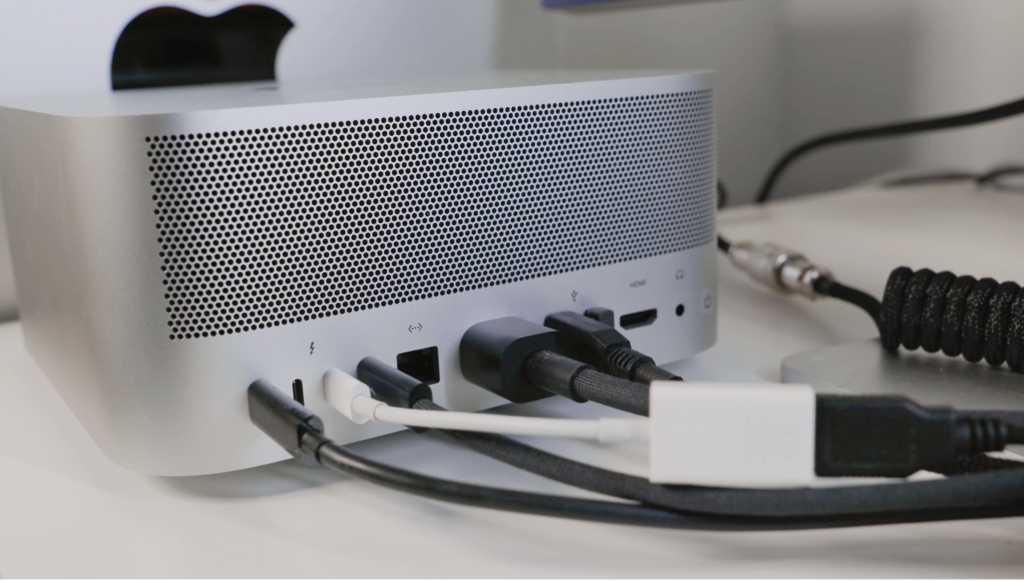Apple went all in on USB-C, starting with the introduction of the now-discontinued 12-inch MacBook in 2015. For a while, you could buy a Mac with one, two, or four USB-C ports, all of which were also Thunderbolt 3 capable, except the 12-inch MacBook. With the introduction of Apple silicon and Thunderbolt 4, as well as faster flavors of USB 3 over USB-C, it seems like every Mac introduced since about 2018 has its own port story.
The number of USB-C ports on a Mac has almost no relationship with the number of displays you can connect, however. The internal workings of the Mac’s graphical processor units (GPUs) and display controllers to which they’re connected determine Apple’s formula for the total number of displays, as does the resolution (number of pixels) of the attached monitors.
For instance, there are Macs with two USB-C ports that also support Thunderbolt 3/4, and they can handle up to four monitors. Some Mac models now have USB-C ports that are indistinguishable from each other yet have different technical specs, and the Mac models support different numbers of displays.
The Mac Studio is a good example–it comes in M2 Max and M2 Ultra versions. Those models, named for their chips, have six USB-C ports each plus an independent HDMI port. However:
- The M2 Max models support Thunderbolt 4 on the rear four USB-C ports but only USB-C (USB 3.2 at 10 Gbps) on the front two.
- The M2 Ultra provides Thunderbolt 4 support on all six USB-C ports.
On the display side:
- The M2 Max can handle up to five displays: four over Thunderbolt using USB-C and one over HDMI.
- The M2 Ultra can run up to eight displays, which may require the HDMI port for the highest resolution and refresh rates.
How can you tell when shopping for a new Mac or planning displays for your existing one how many video outputs a Mac can handle? Consider this:
- Read our guide “How many monitors can I plug into my Mac, anyway?” which provides a full rundown for both Apple silicon M-series Macs and Intel Macs.
- We also explain How to connect two or more external displays to an M1, M2 or M3 MacBook which includes a workaround for the problem discussed here.
- Consult Apple’s technical specifications for a model. Apple archives these specifications for older models, so start with a search engine if your Mac isn’t one that’s still sold—that will get you to the page.
- Read our best Mac monitors round-up.
Ask Mac 911
We’ve compiled a list of the questions we get asked most frequently, along with answers and links to columns: read our super FAQ to see if your question is covered. If not, we’re always looking for new problems to solve! Email yours to mac911@macworld.com, including screen captures as appropriate and whether you want your full name used. Not every question will be answered, we don’t reply to email, and we cannot provide direct troubleshooting advice.

